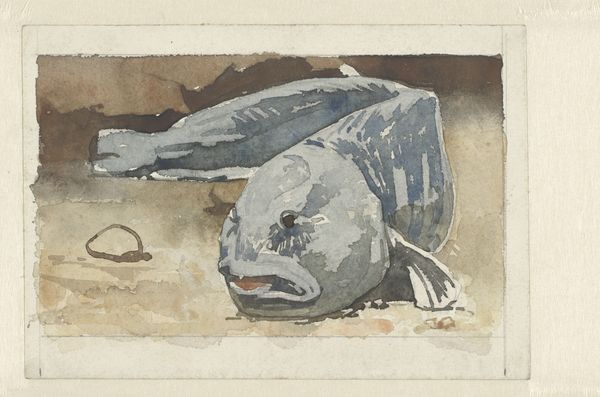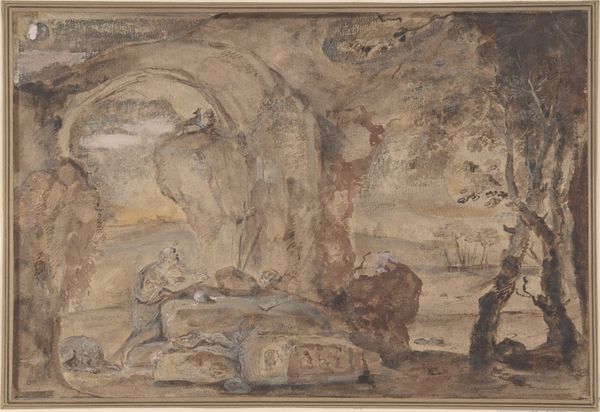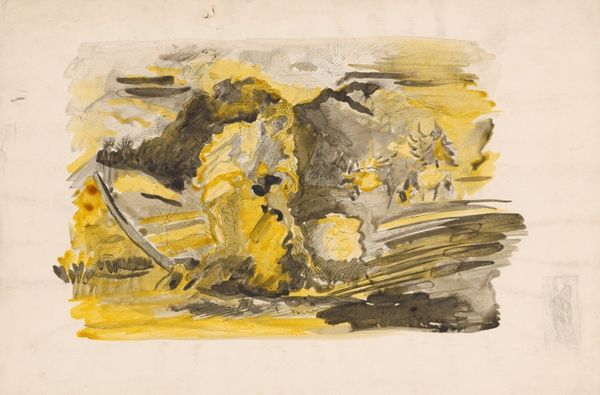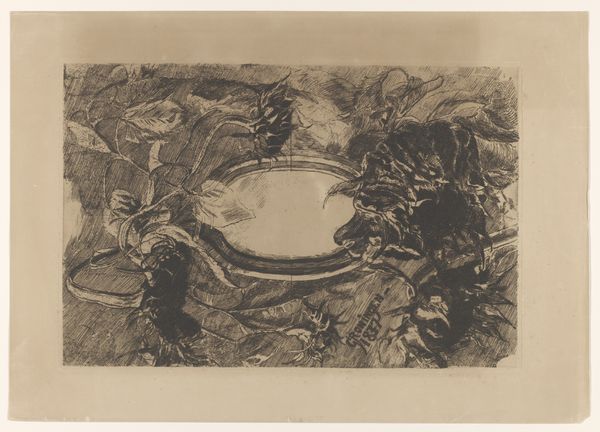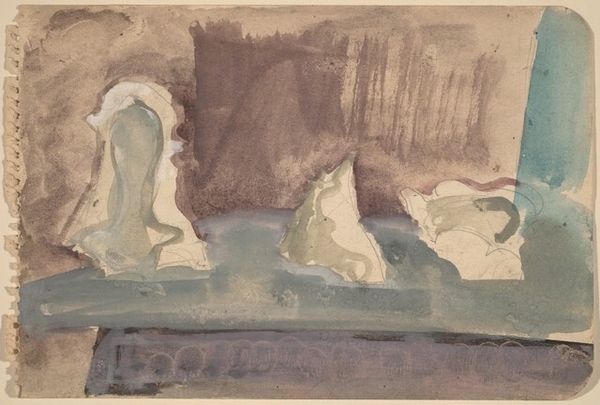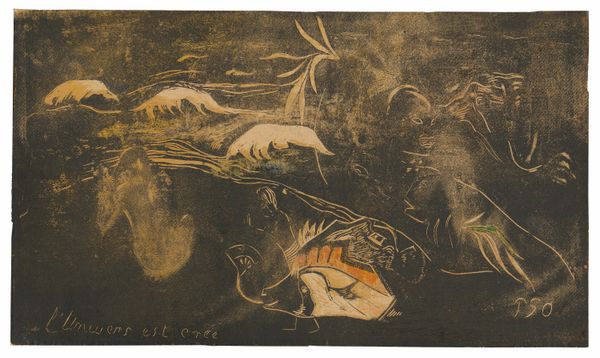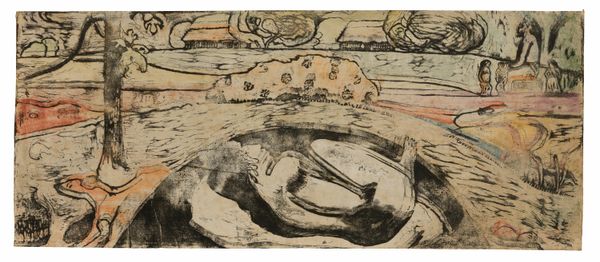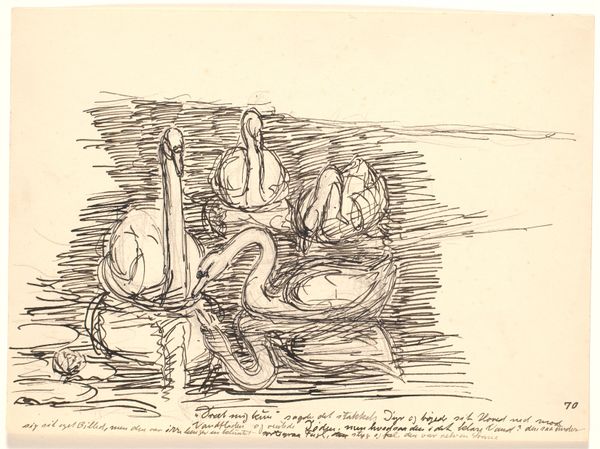
drawing, painting, watercolor
#
drawing
#
painting
#
oil painting
#
watercolor
#
romanticism
#
genre-painting
#
watercolor
#
realism
Dimensions: sheet: 8.89 × 17.78 cm (3 1/2 × 7 in.)
Copyright: National Gallery of Art: CC0 1.0
Curator: Alright, let’s dive into this fascinating piece titled "Shoe, Herring, and Book," created by George Loring Brown in 1833. Editor: It strikes me immediately as a still life of the everyday – humble, perhaps deliberately so. The subdued palette evokes a sense of quietude. Curator: Exactly! Brown seems to be making a deliberate commentary by selecting such quotidian objects. Think about the implications: The book could be a signifier of bourgeois intellectual pursuits. And yet, it rests beneath a well-worn shoe. A visual reminder, perhaps, of the manual labor required to afford such privileges. The addition of the herring introduces ideas of sustenance, further grounding the painting in economic reality. Editor: So you’re reading it as a subtle critique of class? The arrangement certainly suggests a deliberate hierarchy of materials and objects, each with a certain social currency, if you will. Do we know about the role of display and patronage in shaping such work at the time it was produced? Was this type of intimate still life commonly commissioned or consumed? Curator: It’s hard to say definitively without deeper archival research on the artist’s specific commissions. However, such works often served a dual function. They appealed to emerging middle classes eager to possess art while depicting moral lessons regarding diligence. Note the economy of Brown's application of the watercolor medium; the deliberate yet understated execution mirrors the understated subjects of the piece itself. A material manifestation of practical values. Editor: True, the quick and loose strokes and watercolor application underscore a tension between meticulous craft and capturing an ephemeral moment. One imagines the fleeting smell of the fish! Beyond that, the painting is a commentary on access to commodities in nineteenth-century France—the affordability of fish and printed material compared to durable leather shoes speaks to broader cultural norms. Curator: Precisely. So, by showcasing a mix of perishable goods with symbols of knowledge and hard work, Brown invites viewers to ponder socio-economic circumstances while relishing an appreciation of skilled painting techniques, a truly engaging interplay. Editor: I agree, seeing how humble materials could generate social meaning is a unique feature of this painting. Curator: Well, hopefully our reflections today provide a little richer awareness of art.
Comments
No comments
Be the first to comment and join the conversation on the ultimate creative platform.
